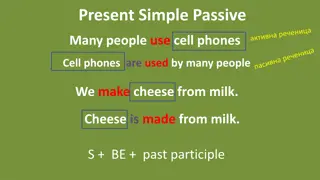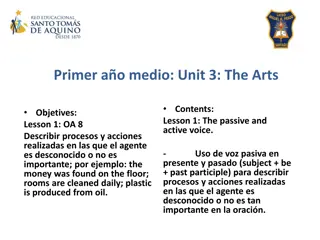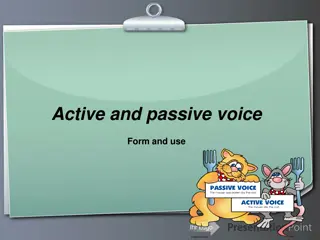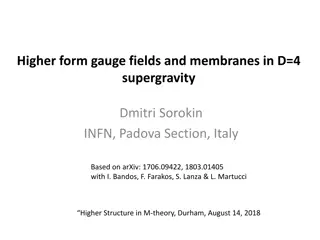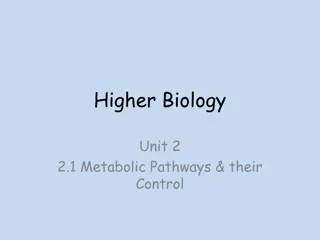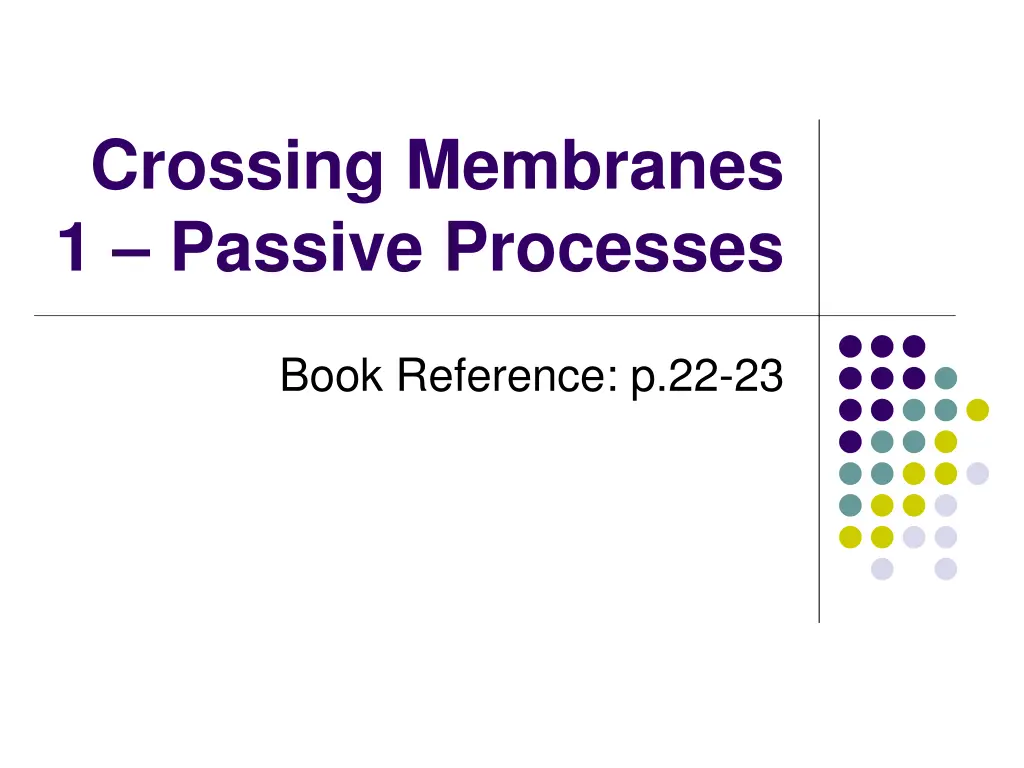
Understanding Diffusion: A Comprehensive Guide
Explore the process of diffusion and its significance in various biological phenomena. Learn about concentration gradients, factors affecting diffusion rates, and real-life examples illustrating diffusion in action.
Uploaded on | 0 Views
Download Presentation

Please find below an Image/Link to download the presentation.
The content on the website is provided AS IS for your information and personal use only. It may not be sold, licensed, or shared on other websites without obtaining consent from the author. If you encounter any issues during the download, it is possible that the publisher has removed the file from their server.
You are allowed to download the files provided on this website for personal or commercial use, subject to the condition that they are used lawfully. All files are the property of their respective owners.
The content on the website is provided AS IS for your information and personal use only. It may not be sold, licensed, or shared on other websites without obtaining consent from the author.
E N D
Presentation Transcript
Crossing Membranes 1 Passive Processes Book Reference: p.22-23
Diffusion The After Shave Man
What is diffusion? (definition) Diffusion is the movement of molecules (or ions) from a region of high concentration to a region of lower concentration until they are spread out evenly
Example 1:Diffusion in the Alveoli: O2diffusing into the blood and CO2diffusing out of the blood
Example 2: Some digested food diffuses across the gut wall into the blood
What affects the rate of diffusion? Concentration gradient: The greater the difference in the concentration of a substance in two areas, the faster the rate of diffusion The rate of diffusion is directly proportional to the concentration gradient
What affects the rate of diffusion?
Small particles tend to diffuse faster than larger ones
Diffusion takes place more quickly through thin membranes (e.g. exchange of gases through the alveolar wall)
The larger the surface area the higher the rate of diffusion (e.g. in gases diffusing into/out of leaves)
The shorter the distance, the faster the rate of diffusion An increase in temperature increases the rate of diffusion
Facilitated Diffusion Faster movement Cell membrane proteins used Channel proteins Carrier proteins
Channel Proteins facilitate the diffusion of Ions Na+ K+ Ca2+ Cl- Why can ions not diffuse freely across the membrane? Usually each channel protein is specific to one type of ion
Channel proteins can open or close their pores acting like gates depending upon the cell s needs
Carrier proteins are more sophisticated in the way they work They allow the diffusion across the membrane of larger polar molecules, such as sugars and amino acids
Once a particular molecule attaches to the carrier protein at it binding site, the carrier protein changes its shape to deliver the molecule through the membrane
This powerpoint was kindly donated to www.worldofteaching.com http://www.worldofteaching.com Is home to well over a thousand powerpoints submitted by teachers. This a free site. Please visit and I hope it will help in your teaching




